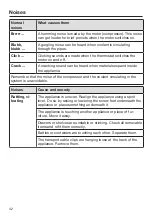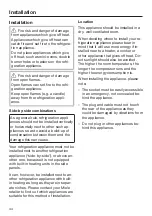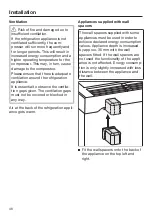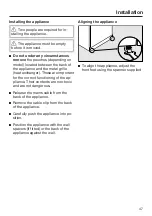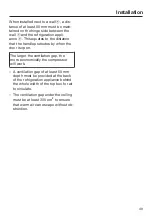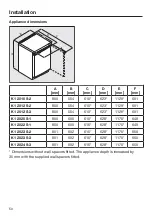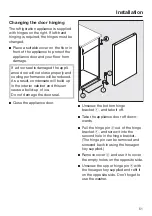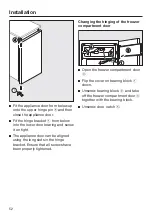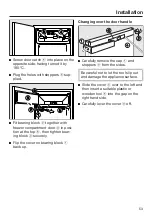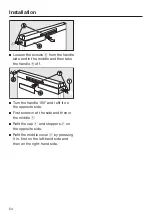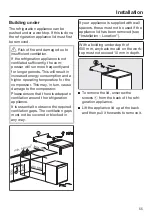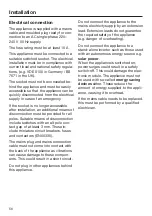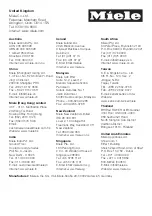
Installation
*
I
N
S
T
A
L
L
A
T
I
O
N
*
56
Electrical connection
The appliance is supplied with a mains
cable and moulded plug ready for con-
nection to an AC single-phase 220–
240 V 50 Hz supply.
The fuse rating must be at least 10 A.
This appliance must be connected to a
suitable switched socket. The electrical
installation must be in compliance with
current local and national safety regula-
tions, (e.g. VDE 0100 in Germany / BS
7671 in the UK).
The socket must not be concealed be-
hind the appliance and must be easily
accessible so that the appliance can be
quickly disconnected from the electrical
supply in case of an emergency.
If the socket is no longer accessible
after installation, an additional means of
disconnection must be provided for all
poles. Suitable means of disconnection
include switches with an all-pole con-
tact gap of at least 3 mm. These in-
clude miniature circuit breakers, fuses
and contactors (EN 60335).
The mains plug and mains connection
cable must not come into contact with
the back of the appliance as vibrations
can cause damage to these compon-
ents. This could result in a short circuit.
Do not plug in other appliances behind
this appliance.
Do not connect the appliance to the
mains electricity supply by an extension
lead. Extension leads do not guarantee
the required safety of the appliance
(e.g. danger of overheating).
Do not connect the appliance to a
stand-alone inverter such as those used
with an autonomous energy source e.g.
solar power
.
When the appliance is switched on,
power surges could result in a safety
switch-off. This could damage the elec-
tronic module. The appliance must not
be used with so-called
energy saving
devices
either. These reduce the
amount of energy supplied to the appli-
ance, causing it to overheat.
If the mains cable needs to be replaced,
this must be performed by a qualified
electrician.

